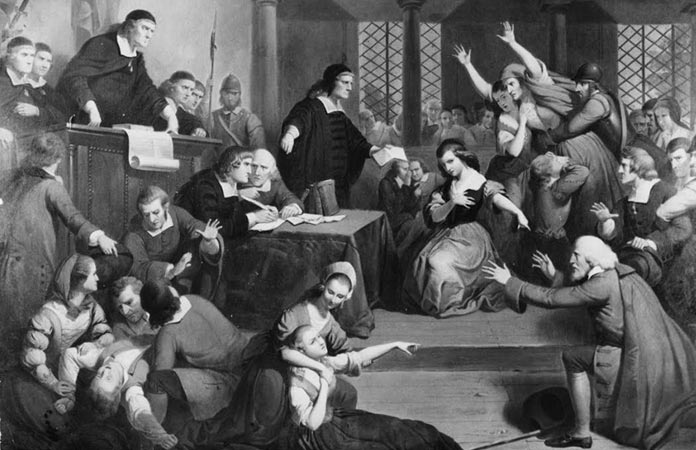Today in Pop Culture: The Salem Witch Trials Begin
Published on March 1st, 2016 in: Culture Shock, Feminism, Magick, Today In Pop Culture |The movie, The Witch, has brought the concept of witches back to the forefront of American culture. The film tells the story of a New England family in the 1700s, fighting against nature, boredom, and black magic. It’s based on old folk tales from the time, which are a decent reflection of history. The family in the movie chose to go outside the village gates and live on their own, unprotected by numbers or any kind of militia. It’s no wonder they get into trouble.
A very real trouble descended upon New England on this date in pop culture history. Sarah Good, Sarah Osborne, and Tituba may sound like the headliners for the new and improved Lilith Fair, but they were center stage for a quite different kind of show. Today, in 1692, the Salem Witch Trials began.
Reverend Samuel Parris of Salem Village had a 9-year-old daughter, Betty, and an 11-year-old niece, Abigail. The two girls began freaking out, falling down and going through seizures. They screamed, hid under furniture, and contorted themselves into odd, twisty positions. With no other explanation available, the girls claimed they had been bewitched. This made sense to Reverend Parris, who was used to searching for the Devil wherever he may be.
The afflicted girls pointed towards Good, Osbourne, and Tituba as the ones throwing bad juju their way, and the three women were hauled in front of the Magistrates.
Were these women actually witches? They were nuisances to the village, and they upset the status quo. Sarah Good was a homeless pest, constantly begging for food and shelter. Sarah Osborne didn’t go to church, which was suspect behavior in a religious community like Salem Village. Tituba was not a local girl. She was a slave who liked to recount the more lurid parts of the Malleus Maleficarum. It was also rumored that she had a talent for divination, and if that’s not proof of wild cavorting with demons, I don’t know what it is.
More women came before the court in the next few months, all of them accused of witchcraft. These accusations were more than likely political. Here was a chance for the leaders of the village to get rid of those who didn’t fit in by charging them with an intangible crime. Soon, there was an epidemic of witchery, both men and women placed in irons and taken before their accusers, who would writhe about appropriately in the presence of their tormentors.
History writes it off as mass hysteria, and it may very well have been. If so, it was a craze that wound up with 20 people being executed while five others died in jail.
Those deaths resonate through history. Arthur Miller’s play, The Crucible, which is all about the witch trials, has become a modern classic. Movies about witches are still popular. Rob Zombie’s polarizing piece of grindhouse art, The Lords of Salem, features a main character who is a direct descendant of one of the prosecutors from the Salem trials.
The Witch certainly has that feel of grime and shit that we associate with that time period, and practically shows us Salem in a microcosm. It gives us all the ambiguity and fear-mongering we expect from an old-timey witch story. But it can’t match the horror and manipulation of what really happened in Salem, where the fear of God was used as a litigious tool to make Salem Village a “better” place, and innocent people were killed for the greater good.
Unless, of course, they really were all witches. I wonder why we assume they weren’t?

Time limit is exhausted. Please reload the CAPTCHA.